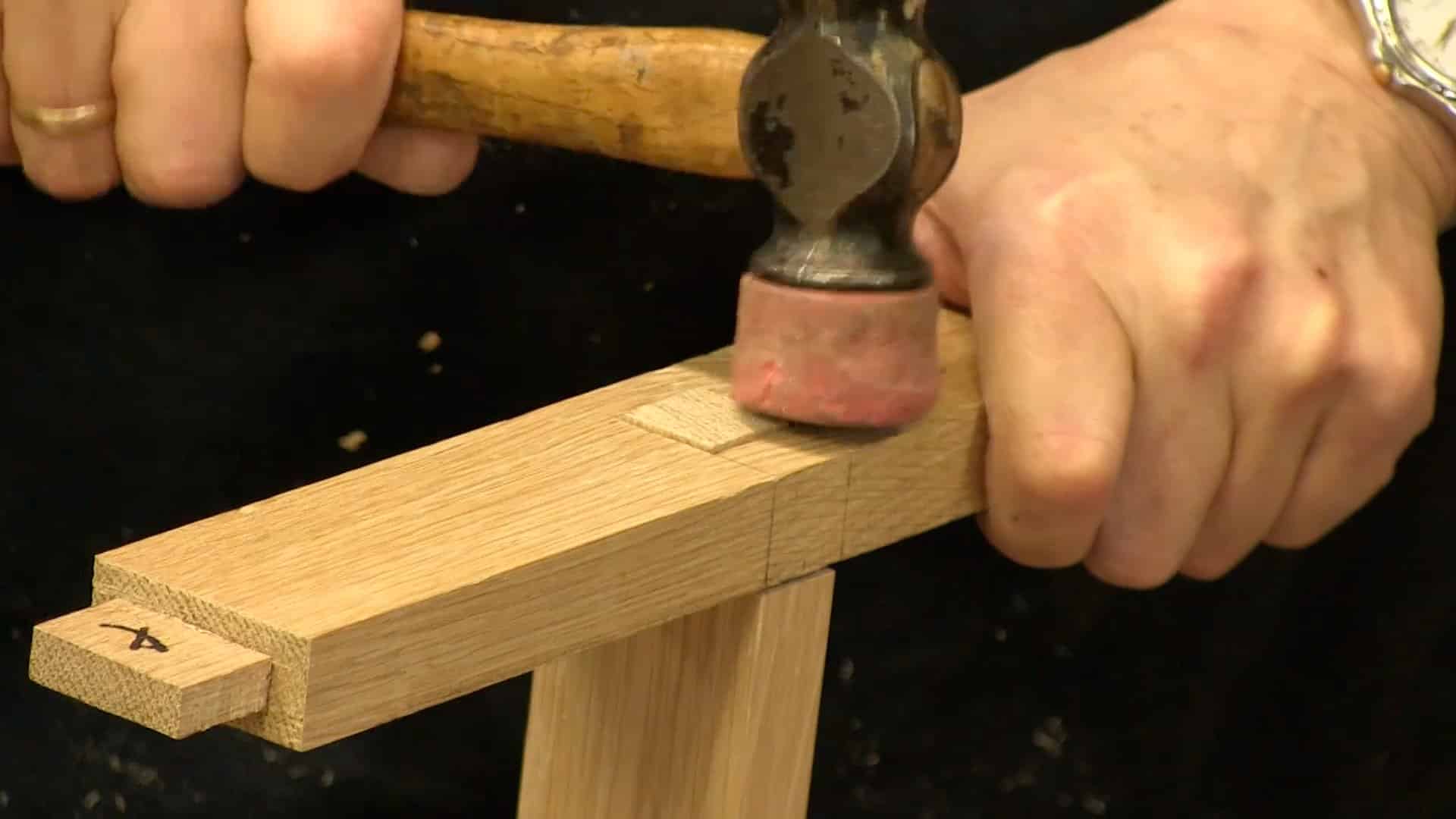Sofa Table: Episode 4
Posted 30 April 2014
This is an episode in a paid series. Want to watch it? You just need to sign up as a paid member, and you can enjoy this video and many other videos we think you will love.
In this episode, Paul cuts the mortices and tenons for the cross-rails and the lengthwise rail, completing the main frame of the sofa table.


Paul have you ever considered publishing your journals as I would be one who would love having them in my library. Love watching your work and wish I’d known when you were in the US and Texas.
Yes I enjoy watching him work he makes it look so easy yet it’s not, permorming a simple operation like the stopped dado in the clock may seem simple enough and lets face many of us have done countless of dado’s but I spent an entire day trying all different methods of executing a perfect dado and by the end of the day I finally did it. Now it’s all about repetition to develop the mind into memorizing exactly placing that chisel 1/32″ from the wall in softer woods so not to over shoot and get a loose fit.
Learning, Refining, Honing and lastly repetition without that last one all the others dissapear over time.
Paul is old school a humble man and a great teacher it truly is a priveledge for me to be a member of his class even if it’s over the net.
I could not have said it better, Salko! I am hoping that I will be able to be patient enough to practice until I get it right!! It is definitely a skill worth working towards!
Dennis,
I know what you mean. It would be pretty cool to have a Paul’s complete collection of sketches, but in one video it looked like he had more than a dozen journals that he amassed over the years so it would take some work for him to decide which to publish in book form-I would guess time is one thing he has very little of.
One day, who knows, perhaps i or someone will find time to pull that together. Our future plans are far more ambitious long term and we are reaching a wider audience these days than ever in our history.
Why did you devise a storyboard for this particular project as opposed to the others?
Shawn,
I obviously have no authority to speak for Paul and am not trying to do that, but I offer my interpretation of as to why I think this is being done. I have seen story boards used on projects that are of greater scale and complexity than the ones Paul was doing before. Not all woodworkers use these story boards, but I would suspect this is merely a technique Paul planned to demonstrate for us at some point and simply chose now to do it. He’s taken great care not to front-load us with too much information, but rather to introduce techniques and knowledge incrementally and in such a way to build in complexity with each project. I would guess he felt, based on his expert experience, that this was a lesson we could handle on this project and at this point in our skill development journey. Naturally, I defer to Paul for his actual reasons, but I hope you will find my take on the situation helpful or at least thought provoking.
Morning all!
Sorry about the video issues. Will investigate the errors you’re getting and update.
All the best, Resi
Hello Paul,
Could I ask you something?
Since the mortises on the legs for the cross-rails, have to be perpendicular to the outside edge of the leg and not on the inside edge (since it has a taper on it); Wouldn’t it be easier at least for a novice to cut the mortise before making the tapered cut to the leg?
I plan on using an electric router to make this mortises – since I find them extremely difficult to chop in my white ash- so for me that’s an extra reason for me to make the taper cut after the mortise.
Regards
I was thinking the same thing. Cut the mortise in the leg while it is square, cut the cross piece to length square, then use the storyboard (or the tapered leg itself) to set a bevel gauge and use that to define the tenon shoulder. Yes, it makes the tenon cutting a little more complicated, but not significantly so (paring or split cutting to an already sawn shoulder works here), but assuming that the template for the taper was generated from the original storyboard, the storyboard can then be used to mark up the angle for the shoulder.
In this episode you lay out the mortise location 9″ up on the tapered face, but in the first episode you deliberately avoid the tapered edge and lay out to the un-tapered leg width.
If I followed the storyboard, rather than the actual part, what extra remedial work might I be faced with? Would this affect the level of the shelf, for example?
Since a mortice, any gauge or laying out tool, is registered against the face side or edge every time, it seems mostly unnecessary to center the mortice on, in this case the stretcher, when laying out tenons. Wouldn’t close be close enough, unless the maker was working from a strict cut list?
Hello Matthew,
Centring the gauge is a matter of consistency for strength and appearance. You usually don’t re-centre for each tenon, but once set keep it to the same setting and register it against the face edge as you say. The consistency of the tenoned piece is of course important.
Best, Phil